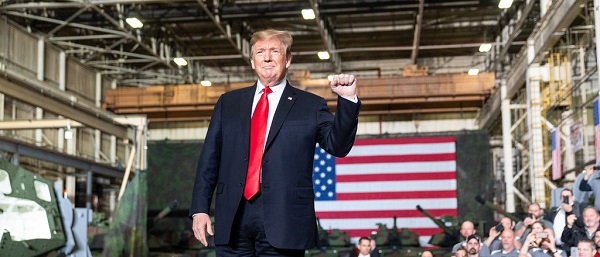Daily Caller
Get Ready For Another Mail-In Ballot Fiasco

From the Daily Caller News Foundation
By John Fund and Hans von Spakovsky
Many states are now sending out mail-in ballots for the November election.
Yet at the same time that so many more voters are depending on the mail to cast their ballots, the two leading national organizations of election officials wrote the U.S. Postal Service demanding immediate action to avoid confusion and chaos with mail-in ballots.
“We implore you to take immediate and tangible corrective action to address the ongoing performance issues with USPS election mail service,” wrote the National Association of State Election Directors and the National Association of Secretaries of State. “Failure to do so will risk limiting voter participation and trust in the election process.” According to the U.S. Election Assistance Commission, mail-in ballots accounted for 43% of the electorate in 2020, a 20-percentage point increase from 2016.
The letter’s list of problems should alarm anyone thinking of voting through the mail instead of going to their polling place to vote in-person. That includes USPS staff nationwide who “are uninformed about USPS policies around election mail,” resulting in “significantly delayed, or otherwise improperly processed” absentee ballots. “Timely postmarked ballots” are being received “10 or more days after postmark,” demonstrating USPS’s “inability to meet their own service delivery deadlines.”
This letter follows a July report from the USPS’s own Inspector General, which warned that its audit of primaries in 13 states found that 2.99% of mail-in ballots reached voters too late and 1.83% were returned to election offices after their legal deadlines. Its list of horror stories included the discovery that “local management at one facility stated they were not aware primary Election Day was that week.”
That means that almost 5% of voters are being disenfranchised, which amounts to hundreds of thousands of votes across the country.
There are reports of other nightmares. Kansas Secretary of State Scott Schwab is “extremely concerned” that in the August primary, 2% of ballots sent by mail were not counted “due to USPS administrative failures.”
“The Pony Express is more efficient at this point” said Schwab.
In July, Utah had a photo-finish Republican congressional primary where the victory margin was 176 votes. But nearly 1,200 mail-in ballots were not counted because they were first sent to a Las Vegas distribution center and not postmarked on time. Most of those ballots were in a county that was carried two-to-one by the candidate who ultimately lost.
The Public Interest Legal Foundation has sued Nevada officials for failure to fix obvious errors on the voter rolls. The organization has found hundreds of questionable voter addresses that include strip clubs, casinos, bars, vacant lots, gas stations, and fast-food restaurants. “Nevada’s policy of automatically mailing a ballot to every active registered voter makes it essential that election officials have accurate voter rolls and are not mailing ballots to addresses where no one lives,” PILF notes.
PILF points out that in 2022, Nevada’s U.S. Senate race was decided by 7,928 votes, which determined party control of that body. The Secretary of State, PILF noted, “published figures showing that 95,556 ballots were sent to undeliverable or ‘bad’ addresses and another 8,036 were rejected upon receipt.” Also: “Another 1.2 million ballots never came back to officials for counting.”
This year, Nevada has another competitive Senate race that could determine the Senate majority.
Nationwide, the U.S. Election Assistance Commission reports that of the almost 91 million mailed ballots sent to voters in all states in 2020, only 70 million were returned.
What happened to the others? Some weren’t filled out. But other completed ballots were probably lost by an increasingly inefficient Postal Service. And election officials complained in their letter to the USPS that election mail being “sent to voters” is being returned as “undeliverable” at a “higher than usual rate.” Some voters registered more than once got more than one ballot.
At least 1.1 million went to outdated addresses. Some may have gone to vacant lots and businesses. Some 500,000 were rejected by election officials when they were returned often due to voter errors that could have been corrected by election officials if the voters had cast their ballot in-person.
Registration lists are notoriously chock full of ineligible, duplicate, fictional and deceased voters, a fact easily exploited to commit fraud. Ballots cast by mail can become the object of intimidation and vote-buying schemes.
In 2005, a bipartisan Commission on Federal Election Reform chaired by former President Jimmy Carter and former Secretary of State James Baker pointed out that “absentee ballots remain the largest source of potential voter fraud.” Even the New York Times admitted in 2012 that “votes cast by mail are less likely to be counted, more likely to be compromised and more likely to be contested than those cast in a voting booth.”
Little has changed, In 2019, a congressional race in North Carolina was thrown out over mail-in ballots gathered through illegal vote trafficking. A judge ordered a new election in the Bridgeport, Connecticut, mayor’s race last year after a video appeared to show two women stuffing suspect large numbers of absentee ballots into drop boxes.
In New York, three Rensselaer County officials are on trial this month accused of mail-in ballot fraud. A former GOP elections commissioner who has already pleaded guilty testified that looser post-COVID mail-in procedures make it much easier to commit voter fraud.
Before Election Day, Postal Service officials must address concerns about delays and mishandling of absentee ballots. Sloppy U.S. voting rules on everything from vote trafficking by third parties to lax or nonexistent ID laws in many states make it vital there be election observers watching every aspect of the voting and tabulation process.
And after the weeks of litigation and delays in counting that a tsunami of mail-in ballots will no doubt create, we should rethink the advice of those who disparage in-person voting and assure us “that the ballots are in the mail.”
After all, if you won the lottery, would you mail your ticket in or appear in person to claim your jackpot?
Hans von Spakovsky is a senior legal fellow in the Edwin Meese III Center for Legal and Judicial Studies at the Heritage Foundation.
John Fund is National Review’s national-affairs reporter.
Business
Scott Bessent Says Trump’s Goal Was Always To Get Trading Partners To Table After Major Pause Announcement


From the Daily Caller News Foundation
By
Secretary of the Treasury Scott Bessent told reporters Wednesday that President Donald Trump’s goal was to have major trading partners agree to negotiate after Trump announced a 90-day pause on reciprocal tariffs for many countries after dozens reached out to the administration.
Trump announced the pause via a Wednesday post on Truth Social that also announced substantial increases in tariffs on Chinese exports to the United States, saying 75 countries had asked to talk. Bessent said during a press event held alongside White House press secretary Karoline Leavitt that Trump had obtained “maximum leverage” to get trading partners to negotiate with the April 2 announcement of reciprocal tariffs.
“This was his strategy all along,” Bessent told reporters during an impromptu press conference at the White House. “And that, you know, you might even say that he goaded China into a bad position. They, they responded. They have shown themselves to the world to be the bad actors. And, and we are willing to cooperate with our allies and with our trading partners who did not retaliate. It wasn’t a hard message: Don’t retaliate, things will turn out well.”
Dear Readers:
As a nonprofit, we are dependent on the generosity of our readers.
Please consider making a small donation of any amount here.
Thank you!
WATCH:
China imposed retaliatory tariffs on American exports to the communist country Wednesday, imposing an 84% tariff on U.S. goods after Trump responded to a 34% tariff by taking American tariffs to 104%.
“Based on the lack of respect that China has shown to the World’s Markets, I am hereby raising the Tariff charged to China by the United States of America to 125%, effective immediately,” Trump said. “At some point, hopefully in the near future, China will realize that the days of ripping off the U.S.A., and other Countries, is no longer sustainable or acceptable.”
“They kept escalating and escalating, and now they have 125% tariffs that will be effective immediately,” Bessent said during the press conference.
Bessent said that China’s actions would not harm the United States as much as it would their own economy.
“We will see what China does,” Bessent said. “But what I am certain of, what I’m certain of, is that what China is doing will affect their economy much more than it will ours, because they have an export-driven, flood the world with cheap export model, and the rest of the world now understands.”
The Dow Jones Industrial average closed up 2,962.86 points Wednesday, with the NASDAQ climbing by 1,755.84 points and the S&P 500 rising 446.05 points, according to FoxBusiness.
Banks
Wall Street Clings To Green Coercion As Trump Unleashes American Energy
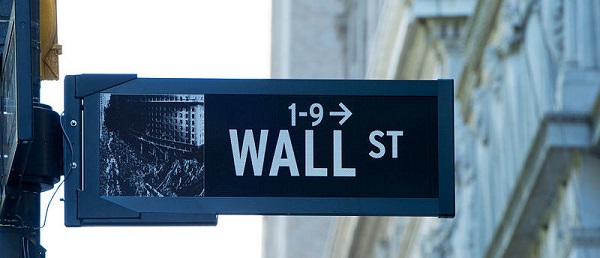

From the Daily Caller News Foundation
By Jason Isaac
The Trump administration’s recent move to revoke Biden-era restrictions on energy development in Alaska’s North Slope—especially in the Arctic National Wildlife Refuge (ANWR)—is a long-overdue correction that prioritizes American prosperity and energy security. This regulatory reset rightly acknowledges what Alaska’s Native communities have long known: responsible energy development offers a path to economic empowerment and self-determination.
But while Washington’s red tape may be unraveling, a more insidious blockade remains firmly in place: Wall Street.
Despite the Trump administration’s restoration of rational permitting processes, major banks and insurance companies continue to collude in starving projects of the capital and risk management services they need. The left’s “debanking” strategy—originally a tactic to pressure gun makers and disfavored industries—is now being weaponized against American energy companies operating in ANWR and similar regions.
Dear Readers:
As a nonprofit, we are dependent on the generosity of our readers.
Please consider making a small donation of any amount here. Thank you!
This quiet embargo began years ago, when JPMorgan Chase, America’s largest bank, declared in 2020 that it would no longer fund oil and gas development in the Arctic, including ANWR. Others quickly followed: Goldman Sachs, Wells Fargo, and Citigroup now all reject Arctic energy projects—effectively shutting down access to capital for an entire region.
Insurers have joined the pile-on. Swiss Re, AIG, and AXIS Capital all publicly stated they would no longer insure drilling in ANWR. In 2023, Chubb became the first U.S.-based insurer to formalize its Arctic ban.
These policies are not merely misguided—they are dangerous. They hand America’s energy future over to OPEC, China, and hostile regimes. They reduce competition, drive up prices, and kneecap the very domestic production that once made the U.S. energy independent.
This isn’t just a theoretical concern. I’ve experienced this discrimination firsthand.
In February 2025, The Hartford notified the American Energy Institute—an educational nonprofit I lead—that it would not renew our insurance policy. The reason? Not risk. Not claims. Not underwriting. The Hartford cited our Facebook page.
“The reason for nonrenewal is we have learned from your Facebook page that your operations include Trade association involved in promoting social/political causes related to energy production. This is not an acceptable exposure under The Hartford’s Small Commercial business segment’s guidelines.”
That’s a direct quote from their nonrenewal notice.
Let’s be clear: The Hartford didn’t drop us for anything we did—they dropped us for what we believe. Our unacceptable “exposure” is telling the truth about the importance of affordable and reliable energy to modern life, and standing up to ESG orthodoxy. We are being punished not for risk, but for advocacy.
This is financial discrimination, pure and simple. What we’re seeing is the private-sector enforcement of political ideology through the strategic denial of access to financial services. It’s ESG—Environmental, Social, and Governance—gone full Orwell.
Banks, insurers, and asset managers may claim these decisions are about “climate risk,” but they rarely apply the same scrutiny to regimes like Venezuela or China, where environmental and human rights abuses are rampant. The issue is not risk. The issue is control.
By shutting out projects in ANWR, Wall Street ensures that even if federal regulators step back, their ESG-aligned agenda still moves forward—through corporate pressure, shareholder resolutions, and selective financial access. This is how ideology replaces democracy.
While the Trump administration deserves praise for removing federal barriers, the fight for energy freedom continues. Policymakers must hold financial institutions accountable for ideological discrimination and protect access to banking and insurance services for all lawful businesses.
Texas has already taken steps by divesting from anti-energy financial firms. Other states should follow, enforcing anti-discrimination laws and leveraging state contracts to ensure fair treatment.
But public pressure matters too. Americans need to know what’s happening behind the curtain of ESG. The green financial complex is not just virtue-signaling—it’s a form of economic coercion designed to override public policy and undermine U.S. sovereignty.
The regulatory shackles may be coming off, but the private-sector blockade remains. As long as banks and insurers collude to deny access to capital and risk protection for projects in ANWR and beyond, America’s energy independence will remain under threat.
We need to call out this hypocrisy. We need to expose it. And we need to fight it—before we lose not just our energy freedom, but our economic prosperity.
The Honorable Jason Isaac is the Founder and CEO of the American Energy Institute. He previously served four terms in the Texas House of Representatives.
-

 2025 Federal Election1 day ago
2025 Federal Election1 day agoRCMP memo warns of Chinese interference on Canadian university campuses to affect election
-
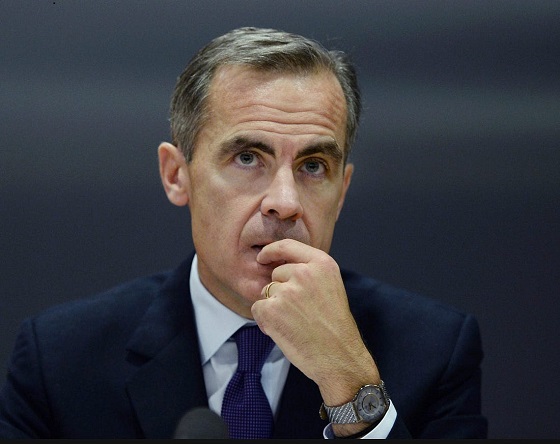
 2025 Federal Election2 days ago
2025 Federal Election2 days agoFifty Shades of Mark Carney
-

 2025 Federal Election18 hours ago
2025 Federal Election18 hours agoResearchers Link China’s Intelligence and Elite Influence Arms to B.C. Government, Liberal Party, and Trudeau-Appointed Senator
-
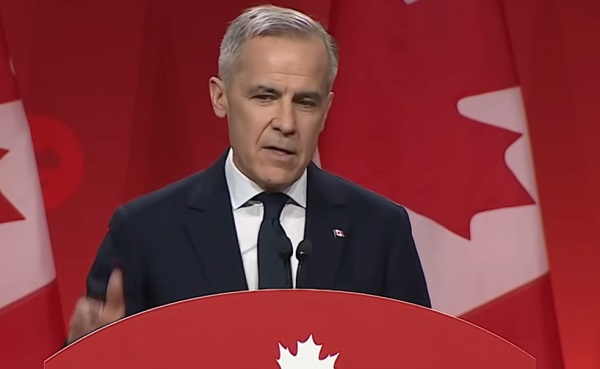
 2025 Federal Election2 days ago
2025 Federal Election2 days agoCommunist China helped boost Mark Carney’s image on social media, election watchdog reports
-

 MAiD2 days ago
MAiD2 days agoDisability rights panel calls out Canada, US states pushing euthanasia on sick patients
-
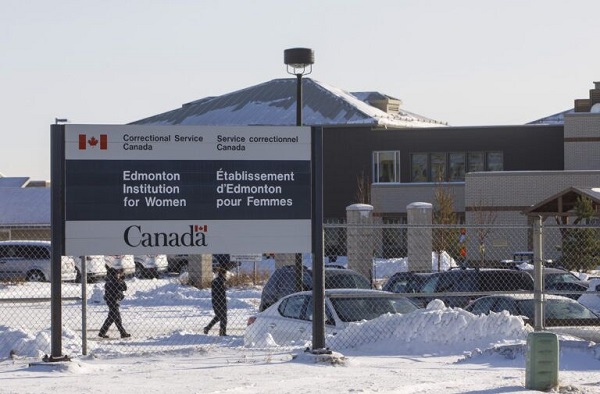
 Justice2 days ago
Justice2 days agoCanadian government sued for forcing women to share spaces with ‘transgender’ male prisoners
-

 Alberta2 days ago
Alberta2 days agoAlberta takes big step towards shorter wait times and higher quality health care
-

 Energy2 days ago
Energy2 days agoTrump signs four executive orders promoting coal industry




